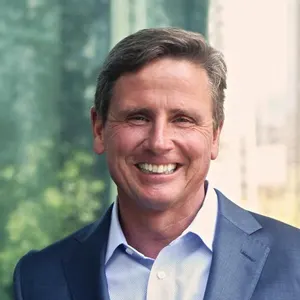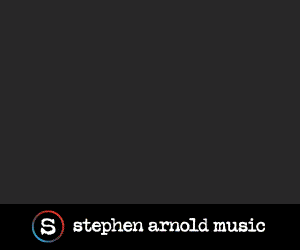Diversified’s Eric Hutto on broadcast integration’s IT evolution

Subscribe to NCS for the latest news, project case studies and product announcements in broadcast technology, creative design and engineering delivered to your inbox.
The role of the broadcast engineer and CTO has shifted, becoming more IT-focused as cloud services and cybersecurity requirements reshape traditional AV and media technology implementations within media and entertainment companies.
 “When I came into the company in ’22, coming 20-plus years out of IT industry services, it was just an inflection point,” said Eric Hutto, CEO of Diversified, in an interview with NewscastStudio. “AV integration would eventually just run smack into IT, moving to services, cloud, cyber – so many more things would come to bear to shape our ability to deliver what we know today as media, broadcasting, or even really just event spaces.”
“When I came into the company in ’22, coming 20-plus years out of IT industry services, it was just an inflection point,” said Eric Hutto, CEO of Diversified, in an interview with NewscastStudio. “AV integration would eventually just run smack into IT, moving to services, cloud, cyber – so many more things would come to bear to shape our ability to deliver what we know today as media, broadcasting, or even really just event spaces.”
This convergence accelerates as broadcast clients increasingly prioritize cybersecurity, content monetization and comprehensive technology solutions. The shift from traditional project-based integration work toward outcome-focused implementations marks a departure from traditional integration work, where vendors work in their independent silos with little overlap.
“It’s not so much about the project, it’s about the overall outcome that the business wants to achieve,” Hutto said. “If you don’t have a holistic view of what it takes to get that business outcome, it will be hard to be profitable because you’ll just be relegated to a space.”
The integration industry faces multiple pressures.
Labor costs continue to rise while hardware prices typically decrease over time. Additionally, media organizations struggle with talent shortages as broadcast engineering expertise becomes increasingly scarce.
Media and entertainment requirements evolve
Chief Information Officers now often control budgets previously managed by facilities teams, changing how integration firms must position their services. These IT-focused buyers expect comprehensive solutions incorporating cybersecurity, cloud capabilities and managed services.
“Our buyers have changed in our industry. We’ve got CIOs now buying my services, not a facilities manager,” Hutto said. “They’re more accustomed to the bigger technology stack conversations and managed services, and they’re asking themselves, ‘Well, you don’t look like anything I’ve been consuming for 20 years.'”
This shift drives integrators to expand their capabilities. Diversified added dedicated cybersecurity personnel and partnered with external security firms to meet these requirements. The company also established an innovation team focused on developing technology roadmaps extending beyond immediate project needs.
Flexible service models emerge
As broadcast organizations face budget constraints, they increasingly seek flexible staffing solutions for live production. Integration firms now offer temporary production teams that can scale up or down based on event requirements.
“We can run your concert and then we can disappear. We can run 300 live events for you and then go away,” Hutto said. “You don’t have to bear the staff. We can even stand up the environment.”
The industry also sees a growing demand for software-based solutions as organizations struggle with hardware refresh cycles. Traditional three-year equipment replacement schedules conflict with five-to-seven-year depreciation periods, creating financial pressure.
“Everybody’s trying to figure out how to maximize the revenue from their investment,” Hutto said. “We’re now looking at our suppliers to actually say, look, if you’re not software-remote capable, in other words, I can commission a program from anywhere in the world, and if you’re not cyber-cloud-oriented, you’re probably not relevant three to five [years out].”
Design integration increases
Integration firms increasingly add design capabilities previously handled by external architecture firms. This expansion allows better accountability throughout project implementation.
“We now have our own design consultants that clients enjoy because whoever designed it, someone’s got to install it,” Hutto said. “If we design it, we can be accountable to it. And we actually can then adjust to things that come up during the actual implementation.”
Cloud impact grows
Cloud technologies continue affecting traditional broadcast infrastructure, including outside broadcast operations. This transition influences capital expenditure models as organizations seek operational expense alternatives to large equipment purchases.
This trend particularly impacts the outside broadcast sector, where truck-based production is facing growing competition from cloud-based remote production solutions.
“I think we both see the cloud is going to change the dynamics of a capital-based truck rolling environment,” Hutto said, referring to traditional outside broadcast providers.
According to Hutto, the broadcast integration industry must evolve toward outcome-based solutions rather than product-focused sales. This requires maintaining vendor neutrality to deliver optimal technical solutions for clients’ business objectives.
“If I’m truly going to be a solutions company, I have to be agnostic,” Hutto said. “I can’t be motivated by the spiff, because that may not be the best technical answer to that business problem that achieves long-term for the client.”
Subscribe to NCS for the latest news, project case studies and product announcements in broadcast technology, creative design and engineering delivered to your inbox.





tags
cloud, Cloud Broadcast Production, Diversified, Eric Hutto
categories
AV Integration & Broadcast Systems Integration, Broadcast Engineering, Broadcast Facility, Broadcast Facility Technology, Heroes, IP Based Production, Voices